
ASOR BOARD OF TRUSTEES NOMINEES (2018)
ASOR is pleased to announce that the Trustee Nominations Committee has selected seven highly qualified members to stand for election for five open positions on the ASOR Board of Trustees (three openings for Member-elected Trustees and two openings for Institutionally-elected Trustees). The ASOR Board sets the direction for ASOR and provides oversight for our organization. Among other responsibilities, members of the Board agree to attend two meetings each year at their own expense, to participate thoughtfully in the governance process, and to contribute financially to ASOR.
There are five candidates running for the three openings as Member-elected Trustees (one opening for a 2-year term, and two openings for 3-year terms). There are two candidates (running unopposed) for two, three-year positions as Institutionally-elected Trustees. All ASOR members are eligible to vote in the Member-elected Trustee Election, while only Institutional Representatives of the 72 ASOR-member schools may vote in the Institutionally-elected Trustee Election.
ASOR will conduct the elections by online ballot, and all members and Institutional Representatives will receive the appropriate ballot(s) on or about October 17, 2018. We will send out two reminders, and all ballots must be completed by 2:00PM Eastern Time on Wednesday, November 7. If you would like to receive a paper ballot or if you have difficulties completing the online ballot (once they are distributed), please contact Marta Ostovich at programs@asor.org.
Nominees for Membership-elected Trustees
(three to be elected)
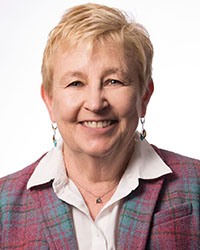
Emily Miller Bonney
Emily Miller Bonney is a professor of Liberal Studies at California State University Fullerton, where she currently serves as Interim Dean of the Pollak University Library. She received her PhD in Greek and Roman art and archaeology from the Institute of Fine Arts at New York University and her JD from the University of California at Los Angeles. Her research focuses on Bronze Age Crete, and specifically on the application of extended mind and material agency theories to the relationship between the archaeological record and social/political/economic change. She also examines the ways in which the specific disciplinary frameworks affect the conclusions scholars reach. Among her publications is the co-edited volume Incomplete Archaeologies: Assembling Knowledge in the Past and Present. Her recent work re-examines the mortuary evidence for social organization transitions in the Early Bronze Age on Crete, particularly the circular stone tombs, and for cross-crafting in pottery and other media.
Mission Statement: When I returned to the Academy in 1999 after 15 years in the world of law school and legal practice, a colleague suggested I attend an ASOR meeting, and I remain forever grateful for that recommendation. Like many people I found my vision of my profession changed through contact with ASOR members and activities, and I look forward to the opportunity to serve and give back to the organization as a Board member. If elected I would work to ensure that ASOR can continue its support of scholarly activity in the field, in research, and in the classroom. In particular I would encourage continued expansion into all levels of education as well as in the network of municipal libraries and other public fora with an eye to elevating everyone’s awareness of our shared cultural heritage. The organization has been importantly active in supporting younger scholars’ development and maintenance of professional networks and more recently has begun to provide opportunities to explore careers outside the academy, both efforts to which I am deeply committed. I also would hope to see ASOR maintain and grow its role as an intermediary between the realms of scholarship and the wider public in its publications and in an array of outreach activities. To that end I would want to find ways we could continue to expand membership not just among scholars working in the Near East and the Western Mediterranean, but among those interested in understanding antiquity more broadly defined – in Europe, Asia and the Americas. Finally I would encourage increasing ASOR’s advocacy for the preservation of the peoples and cultures we study. We all have a stake in deepening our understanding of the civilizations that preceded our own.

Jane DeRose Evans
Jane DeRose Evans is an archaeologist who works in any area that was conquered by the Romans: she has conducted field work in France, England, Greece, Israel, Jordan, and especially Turkey. She has written reports on the coins from the excavations of the synagogue at Sardis, Bir Madkhour, Tell er Ras, Gordion and Sardis. She is the author of books on the excavation coins of Sardis (Coins from the Excavations at Sardis: Their Archaeological and Economic Contexts, Harvard 2018), and Caesarea Maritima (The JECM Excavation Reports v.6, The Coins and the Hellenistic, Roman, and Byzantine Economy of Palestine, ASOR 2006) and political propaganda (The Art of Persuasion, Michigan 1992). She was editor and contributor to The JECM Excavation Reports v.2: the Mithraeum at Caesarea Maritima (ASOR 2017). She is preparing a volume on the portico of Area C in Caesarea Maritima. Currently, she serves as Chair of Art History at Tyler School of Art, Temple University.
Mission statement: ASOR has been an important part of my scholarly life since graduate school, as a place to find out about excavations and new ways of thinking about the cultural history of the southern Levant and Anatolia. More recently, I served on the committee to write the policies on ethics, been an active member with the women of ASOR, and part of the cultural heritage committee. I have been proud to see ASOR move to a stable financial footing, and tackle important questions of cultural heritage and ethical responses to threats to the region’s archaeological heritage. The organization is entering a new phase, with the movement of the offices, and its relationship to AAR/SBL in flux. I hope to be part of the transition time, as we retain our valuable mission to bring a greater understanding of our past to a wider audience.
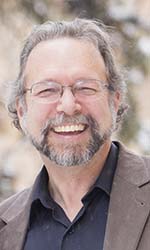
Paul V.M. Flesher
My primary training is in the history of ancient Judaism and its texts, but I have always seen archaeological research as an important source of information for understanding the ancient Near East. One of my earliest articles analyzed the archaeological interpretation of first-century synagogues in the land of Israel. In 1995, I edited Ancient Synagogues: Historical Analysis & Archaeological Discovery with Dan Urman, a work that brought together the best Israeli and American research on ancient synagogues, both archaeological and historical. More recently, I worked with Jennie Ebeling, Ed Wright and Mark Elliot to publish The Old Testament in Archaeology and History (2017), the first textbook to provide a history of ancient Israel drawing equally upon the evidence of archaeology, biblical books and other historical evidence.
My academic training has been in Judaism of the land of Israel during the Roman and early Byzantine periods. After my undergraduate work in Religious Studies at the University of Rochester, I undertook an M.Phil. with Geza Vermes at Oxford University (1982) and then did a Ph.D. in the History of Judaism with Jacob Neusner at Brown University (1988).
During my undergraduate days, I studied computer programming and engineering, and for the last 40 years have used computers in my research into antiquity in a variety of ways. In particular, my archaeological experience has often been tied to computers. When I was on the staff of the Tel Miqne excavations in 1995, I was responsible for designing a pottery database and recording finds. More recently, I served on the Huqoq staff for four years, first designing a database for recording all finds and information, and then guiding the process of recording the information into it.
Currently, I am involved with Chad Spigel, as well as Eric and Carol Meyers, to create an online archive of the excavation records from the four upper-Galilean synagogues which the Meyers excavated and published during their career. The first site, Gush Halav, should be publicly available within the year.
My current research began while I served as the Seymour Gitin Distinguished Professor at the Albright Institute of Archaeological Research in 2016. It focuses on the archaeology of ritual in ancient synagogues, where I draw upon historical, textual and archaeological information to understand the rites practiced in synagogue. I am also engaged in the archaeoacoustic modeling of synagogue worship, based on excavated synagogue remains. Next year, my institution, the University of Wyoming, will be a sponsor of the new excavations at Abu Shusha, taking place under the directorship of Matt Adams and the Jezreel Valley Regional Project, where I will serve on the staff.
Finally, part of what I can bring to a position on the Board is my decades of experience in “scholarship for the public.” I have been an associate editor of the Bible and Interpretation website from its founding, written a bi-monthly newspaper column called Religion Today since 2000, and for the last decade have organized and promoted an extensive, faculty based, lecture series across my state called Saturday University. While only Bible and Interpretation features archaeology, these activities have provided me with broad expertise in public outreach that could help ASOR promote Near Eastern archaeology more effectively.
Mission Statement:
The heart of ASOR is archaeological excavation. And rightly so, for fieldwork provides the fastest growing body of knowledge concerning the ancient Near East. For more than a century, ASOR has provided on-the-ground support structures and a strong disciplinary environment that have advanced and enhanced American archaeological work in the region.
ASOR itself does not excavate, however, it has always left that activity to individual archaeologists. As a scholarly organization, it works towards goals beyond the reach of its individual and institutional members, addressing problems and issues that require a broader approach.
Today excavation research and its results need to reach audiences beyond the archaeological community. In this era of fewer academic positions and dwindling resources, ASOR needs to make a strong case for the relevance of archaeology and the ancient world more broadly, for the understanding of ancient peoples continues to be relevant today. ASOR’s Strategic plan lays out a multi-pronged strategy to accomplish that, focusing on outreach, publication and education. If elected to the Board, I would work to guide ASOR’s strategy for accomplishing those goals.
Outreach is more than splashy newspaper headlines. Effective outreach meets the audience where they are, rather than asking them to come to us. Today, this requires a variety of digital and internet platforms, connected to each other and supported by networking social media; it requires marketing to a general public, to students, and to specific segments of both. But the internet is not a substitute for face-to-face interaction in local communities. ASOR cannot do this as an organization, that is the job of our members, but it can provide resources to support the local work of its membership.
Education is another area where ASOR needs to undertake a new approach. As archaeologists retire, positions are disappearing. We are losing access to our undergraduates, to our future. We need to work with our cognate disciplines, demonstrating our relevance to their undertakings, so that we can come together to strengthen each other’s position in the academy. Some of the decline in positions comes from budget reductions, but we need to be making our case now so that when budgets become flush again, Near East archaeology is an area institutions can be persuaded to hire.
Both outreach and education depend upon publication. ASOR needs to continue and even expand its traditional publication approach, but it also needs to move solidly into digital publication. This will enable it to develop new ways of promoting archaeological research to scholars and students in cognate fields as well as the general public, and new ways of disseminating archaeological data and research results to the discipline. Lots of experimentation with digital and internet publication has taken place over the last two decades; it is time to assess what has worked, what has not, and then develop its own outlets in a methodical and persistent manner.
Digital publication modes are needed for both new and old research. On the one hand, as the cutting edge of archaeological investigation makes increasing use of new technological and digital techniques, we need to find new ways of disseminating those results instead of forcing them into the limitations of print technology. On the other hand, ASOR should promote the publication of archives from past excavations. While final reports are both important and necessary, their limitations are increasing clear. For proper scientific analysis, one that enables the debate needed to refine interpretation of results, all excavation data needs to be available for both further analysis and for teaching purposes.
If elected an ASOR trustee, I will use my experience in these three areas to help promote the importance of excavations to broader audiences for the benefit of ASOR and its constituents.
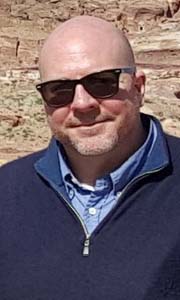
Andrew McCarthy
Andrew McCarthy studied Classics and History at Loyola University New Orleans before moving to the University of Edinburgh to pursue a PhD in prehistoric Near Eastern archaeology under Prof. Trevor Watkins and Prof. Edgar Peltenburg. Since 1995, he has been very active in fieldwork, including Field Directing sites in Syria such as the (ASOR-affiliated) Tell Jerablus Tahtani and Tell Leilan’s City Gate, as well as surveys such as the Land of Carchemish Project. Since 2001, he also participated in excavations in Cyprus, where he currently Directs the ASOR-affiliated Prastio-Mesorotsos Archaeological Expedition and co-Directs the ASOR-affiliated Makounta-Voules Project. In 2000, he became a member of ASOR and has participated in the Annual Meeting every year since, including co-chairing the Theoretical and Anthropological Approaches session for a decade and serving ex-officio on its Board of Trustees from 2011-2017. After receiving his PhD, he was taken on as a Fellow in History, Classics and Archaeology at the University of Edinburgh, a title which he still holds. He also served as CAARI Director from 2011 to 2017, during which time he oversaw the construction of the Library Expansion Project, which tripled the library space and renovated the facilities as well as expanding the institute’s endowment. In 2018, he took on the role of Adjunct Lecturer at the College of Southern Nevada and serves on the Board of two southwestern US archaeology learned societies. He is a glyptic specialist who is widely published in art history and early bureaucracy. He has also published extensively on theory, methodology, gender, ethics and trafficking of cultural property, experimental archaeology and artifactual analysis in addition to the publication of several sites and surveys in the Near East and eastern Mediterranean.
Mission Statement: As an American who found myself living and working in Europe for twenty years, ASOR has long been my lifeline connecting me to a community of Near Eastern archaeologists that spans the world. I have gotten a great deal out of my association with ASOR, but because of the good-spirited nature of the membership, I also feel like I can make a positive impact in the organization. These connections continued when I became the Director of CAARI, and I found that ASOR served as the thread that tied researchers across the Mediterranean and Near East together. In part this was through the affiliated overseas centers, but the central ASOR organization also plays a crucial role. I now find myself teaching at a Community College in America and ASOR once again can serve to make important connections. In my current position I frequently encounter students and researchers who feel that they have no way to advance in archaeology. My mission is to use ASOR as a conduit to expand access to Near Eastern archaeology for students and researchers from diverse backgrounds. Increased access will in turn expand the breadth of perspectives in archaeology and improve the discipline as a consequence.
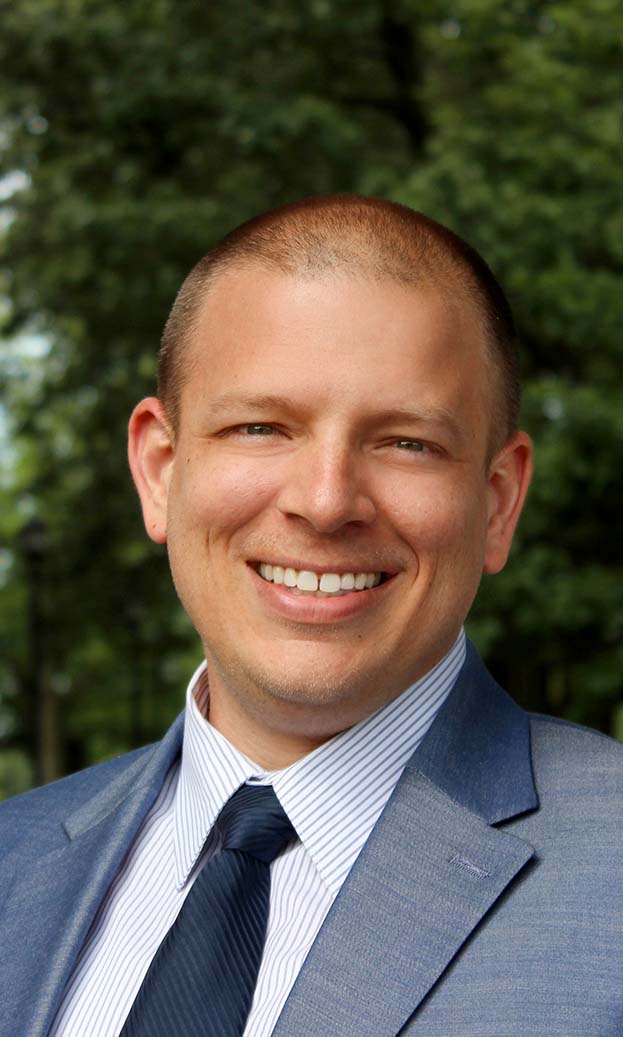
Eric Welch
Eric Welch received his PhD in History and Classics and Ancient Mediterranean Studies from the Pennsylvania State University in 2015. Following three years as Visiting Assistant Professor of Jewish Studies at the University of Kansas, he joined the University of Kentucky as a founding lecturer in the Lewis Honors College. As a Senior Lecturer, he teaches across the honors curriculum, including honors courses in Hebrew Bible, History, and Archaeology. Eric has been with the Tell es-Safi/Gath Excavation Project since 2006, where he directs the excavation of a 9th century BCE olive oil production facility. His work at Tell es-Safi has been supported by ASOR’s Heritage Excavation Grant, the Sean William Dever Fellowship, and was presented at the ASOR Annual Meeting with the assistance of the Foundation for Biblical Archaeology Scholarship.
Eric has been an active member of ASOR since 2008 in both scholarship and service. He is a member of the ASOR Early Career Scholars committee and currently serves as co-chair of the committee. He also serves on the ASOR ad hoc committee for the location of the Annual Meeting and is the chair of the ASOR program unit, Archaeology of the Near East: Bronze and Iron Ages.
Mission Statement: My goal in serving ASOR is to represent the voice of early career scholars. As the landscape of employment changes, I intend to be an advocate for our undergraduate, graduate, and post-graduate members as they seek out personal and professional fulfillment. ASOR has always been comprised of specialists who hold jobs outside of traditional tenure track university positions. I want to continue make ASOR a place that embraces career diversity and empowers early career scholars to be active members in ASOR whether their position is academic, peri-academic, or in an industry completely unrelated to the academy.
To do this, I have taken the lead on a mentorship initiative as a part of my work on the Early Career Scholars Committee. My vision is that our early career scholars would have opportunities for mentorship and professional development that reflect the realities of our collective career diversity. As a member of the Board of Trustees, I will be better positioned to communicate the necessity of this initiative to the wider membership body, along with an improved ability to facilitate these mentorship opportunities. It is my hope that efforts like this will contribute to the value of ASOR membership whether one seeks employment in the academy or beyond.
As an early career scholar, I recognize the important role the Annual Meeting plays in my own professional development. A significant portion of our members are the only Near Eastern scholars in their place of work, so the November meeting provides a crucial opportunity to interact with other scholars of the ancient Near East. With a significant portion of our membership having little to no access to professional development funds, it is imperative that the Annual Meeting remain financially feasible for all members. At the same time, I am committed to ensuring that the Annual Meeting is financially viable for ASOR. As a member of the Board of Trustees, I look forward to helping the Annual Meeting continue to benefit the membership of ASOR without becoming a financial liability for our organization.
Nominees for Institutionally-elected Trustees
(two to be elected)
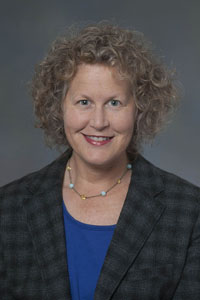
Lynn Swartz Dodd
Lynn Swartz Dodd is Associate Professor of the Practice of Religion at the University of Southern California Dornsife College of Letters, Arts and Sciences. There, she has served as the Director of the Interdisciplinary Archaeology Undergraduate Major and the Director of Undergraduate Studies in Religion. She was also designated a USC Dornsife Distinguished Faculty Fellow.
Dodd’s research centers on archaeology and politics, and the ways that beliefs about the world and resources figure in social change. As Curator of USC’s Archaeology Research Center, she is also engaged in material studies, excavation publication projects, and new imaging techniques in archaeological research and conservation. She directs the Tell al-Judaidah Publication Project (Turkey) and Native American Sacred Landscapes Project (California); co-directed the Kenan Tepe Excavations (Tigris River, Turkey); and was field director of the Amuq Valley Research Project Survey (Turkey). Dodd is in addition the co-organizer of the Israeli Palestinian Archaeology Working Group.
Dodd has served ASOR in many capacities: for example, as a member of the Publications Committee and of the Committee on Archaeological Research and Policy (and as Chair of that committee’s Fellowships Subcommittee), and member of the Near Eastern Archaeology Editorial Board. She was the Chair of the Ad Hoc Ethics Working Group that authored the Policy on Professional Conduct adopted by the ASOR Board in April 2015. She has been ASOR Secretary since January 1, 2013.
In November 2015, she received the ASOR Membership Service Award.
Mission Statement: During my term serving as Secretary of the Board of Trustees and Chair of the Ad Hoc Ethics Working Group, I came to understand the critical importance of ASOR members’ perspectives about professional responsibility in all areas of research, publication, and teaching. I support ASOR’s on-going efforts to specify best practices that support safety and respect for all participants in every environment.
I applaud ASOR’s recent decision to open all benefits of membership, including scholarships, to all members regardless of their home location. As an Institutional Representative to the ASOR Board of Trustees, I will work to increase the visible, reciprocal benefits both for Institutional members and for ASOR. Also, I will contribute to reimagining institutional membership in ways that enable diverse forms of support for ASOR and its members worldwide. I will encourage ASOR to pursue initiatives that support relevance, diversity, and expanded professional opportunities for ASOR members, including new partnerships with non-profits and other organizations. I affirm ASOR’s tangible efforts to support heritage preservation, documentation and rebuilding in the regions where ASOR members work as reflections of our broad vision of scholarly responsibility and relevance. I will continue to support ASOR personally, and will seek to identify others who will support ASOR, both financially and in other ways, so that additional resources can be offered to members who participate in research into, and public understanding of, the history and cultures of the Near East and wider Mediterranean, from the earliest times.

J. Edward Wright
Wright is Professor of Hebrew Bible and Early Judaism and Director of The Arizona Center for Judaic Studies at the University of Arizona. Wright’s area of expertise is early Jewish history and religion with particular interest in early Jewish apocryphal texts — texts that shed light on the non-traditional aspects of early Jewish thought and culture, allowing for a more accurate depiction of the rich diversity of early Judaism.
Wright is also a member of the Board of Advisors of the Museum of Biblical Archaeology, a new national public museum that will be devoted to the history, culture, and people of the land of the Bible. In addition, he serves as a co-editor of “The Bible and Interpretation” website, and he is a past President of the Society of Biblical Literature, Pacific Coast Region.
Within ASOR, Wright was the guest editor of a special issue of Near Eastern Archaeology — “The House that Albright Built” (NEA 65/1). He has served as an ASOR Trustee since 2006, and he also served two terms as President of the W. F. Albright Institute for Archaeological Research (AIAR), from 2006-2012. He remains an Honorary Trustee of the Albright. Currently, Wright serves as the Chair of the ASOR Board’s Development Committee. In November 2012, Wright received ASOR’s W. F. Albright Service Award, which honors an individual who has shown special support or made outstanding service contributions to one of the overseas centers, ACOR, AIAR, CAARI, or to one of the overseas committees – the Baghdad Committee and the Damascus Committee.
Mission Statement: As a trustee I will support ASOR’s mission to support and promote archaeological excavation, scholarly research, student training, and the dissemination of information about the cultures and history of the Near East. As the current chair of the development committee, I am especially interested in promoting development efforts that strive to raise funds to support ASOR’s mission-driven endeavors, and that naturally includes the effort to established our new headquarters in the DC area.
.